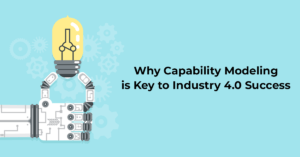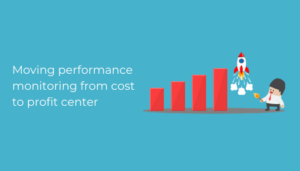PLM Empowering Growth: Surging Ahead with PLM 2.0
In a dynamic and rapidly evolving market, product lifecycle management (PLM) is often the crucial tool that separates the winners from the also-rans. It empowers organizations to anticipate and respond to the inevitable gusts of change that regularly sweep through every industry. A recently released research paper (PDF), ‘A benchmarking framework for PLM maturity models’, asserts that PLM can improve decision-making and reduce costs “by taking advantage of the efficiencies and effectiveness coming from improved market intelligence and collaboration of partners”.
Why PLM matters
Organizations are constantly under pressure to release newer products that are more profitable, require less labour and can be better controlled from financial and environmental perspectives. They also have to be nimble enough to keep track of and exploit upcoming opportunities in technology, supply chains, regulatory updates or customer demands. “In this situation, PLM is an essential tool for coping with the challenges of more demanding global competition and ever-shortening product and component life cycles,” the report adds, noting that PLM can be looked upon as the business of managing, in the most effective way, an organization’s products all the way across their life cycles — from design to disposal.
Importance of benchmarking PLM often requires new types of skills and capabilities and this can necessitate extensive cultural and strategic changes to be made within an organization — a process that can take anywhere from months to years. The organization also needs to ensure that it is on the right track with the changes. And here, benchmarking can play a key role by helping you remain focused and on-course. Benchmarking can be about comparing your current products to your past products, or about comparing your products to those from your competition. This can tell you how well — or how poorly — your product is performing in particular KPIs. These key performance indicators could range from adoption and stickiness to customer feedback and net promoter score. ProductCraft, which aggregates insights from product leaders, points out that product performance benchmarks exist so that companies can identify ways to make their products better. “Benchmarking is a key part of the continuous improvement cycle, which includes measurement, comparing results to competition, and identifying opportunities for improvement. Before a company can reap the benefits of product benchmarks, the product organization needs to ensure it is effectively capturing product data and measuring the right things.” The important bit here, of course, is knowing what these right things are and being able to prioritize them according to their importance to the organization. As management consultancy DRM Associates observes, no organization can improve all aspects of product development at once. “The implementation of product development best practices can be viewed as a journey rather than a destination.” And the first step on this journey is to understand the practices that should be adopted. Second step would be to consider the strategic direction for the organization — for example, the goal could be to become a low-cost producer, or the most innovative producer, or perhaps the highest quality producer. Next, the organization must assess its strengths and weaknesses. “By focusing on the gap between where a company is and where it needs to be, priorities can be set for making improvements.”
From PLM to PLI PLM itself has been impacted by technological innovations and evolving needs, and is now being increasingly infused with artificial intelligence and machine learning. Consulting firm Kalypso describes this evolution as Product Lifecycle Intelligence (PLI) and explains that while the old-school method of poring over excel sheets and other reports helped organizations manually explore and begin to explain business performance, PLI goes way beyond that by predicting outcomes, prescribing actions for improvement or automating actions in PLM. You can think of PLI as PLM on steroids! Kalypso outlines four broad areas where PLI can help organizations — firstly, it can be used to explore current and historical product development metrics; secondly, it can explain performance trends, identify important patterns, correlations and root causes; the third use case is forecasting future performance based on predictive analytics and machine learning techniques; and the fourth use is prescribing evidence-based recommendations to improve future outcomes and automation of actions in PLM, including accepting or rejecting workflow changes. “PLM can do a great job of managing product data through rapid change, but it’s not perfect at putting that data to work through data mining and analytics,” states Kalypso. But by enhancing PLM with PLI, organizations can easily fill the gaps in PLM analytics, and ensure that they are better prepared to take on the future, no matter how rocky the road ahead may be.









































































